It was 1968, and I was not yet three years old. My dad came home from work one day and hoisted me up onto his shoulders for a quick stroll through the woods behind the house. I recall that his face was scratchy as I clung on for dear life.
As Dad walked out into a cow pasture I was shocked by a terribly loud noise coming unexpectedly out of the clear blue sky. I looked up and spied three delta-shaped airplanes at extreme altitude, each producing four distinct contrails. Even today, some 56 years later, I remember that image clearly.
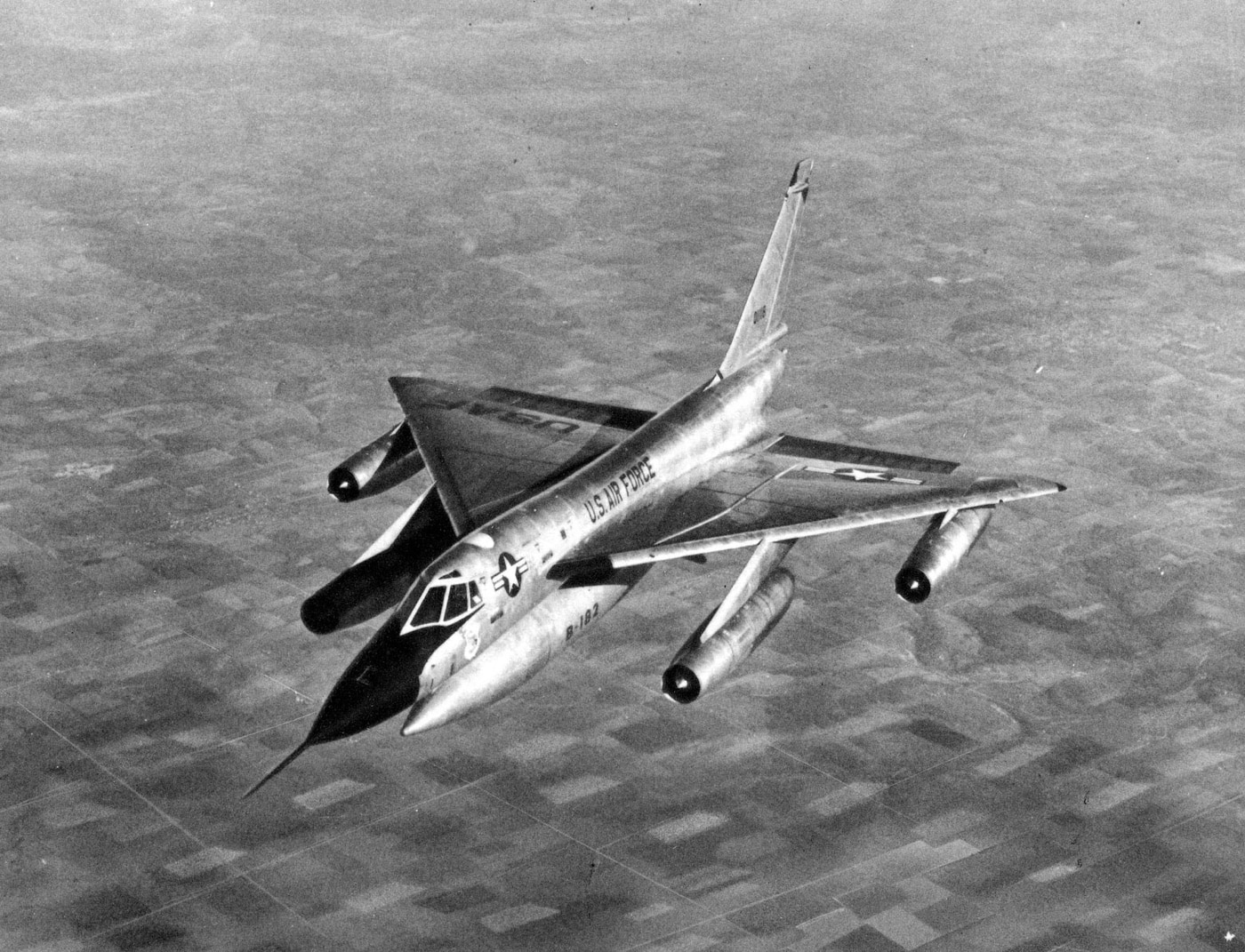
Back then, sonic booms over occupied spaces were clearly still a thing. I eventually went on to invest my adult lifetime as a pilot, but that was my first conscious recollection of an airplane. That was also my initial introduction to the extraordinary Convair B-58 Hustler.
Origin Story of the B-58 Hustler
The B-58 Hustler was a child of the Cold War. Where modern warplanes are multi-role machines designed to do many things well, the B-58 was contrived for a single, laser-focused mission. The Hustler was intended to end the world.
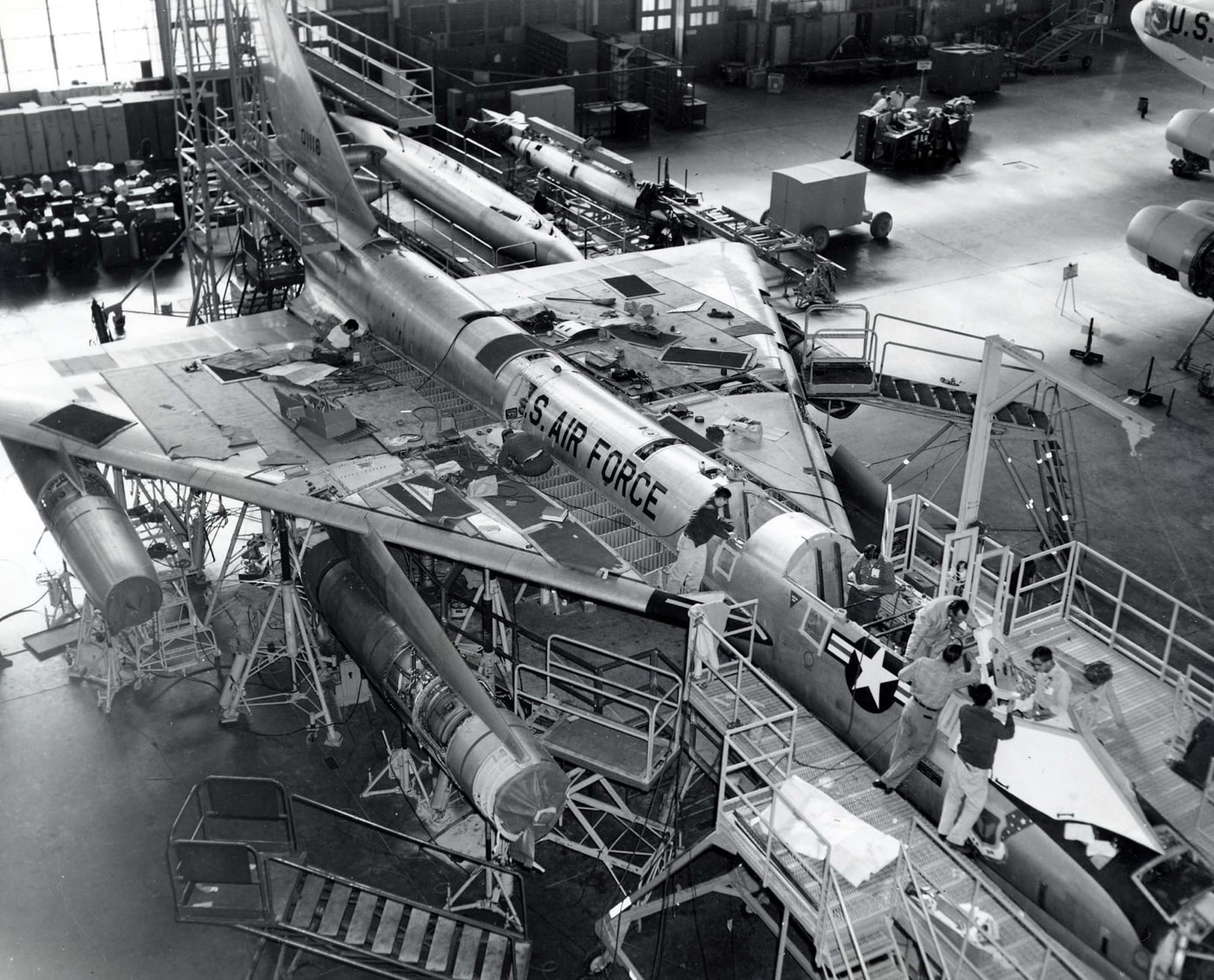
A shockingly sleek, delta wing design, the B-58 embraced the axiom that, in 1960s-era aerial combat, speed and altitude were life. The Hustler could easily make Mach 2 at 70,000 feet. Air Force planners of the day rightly believed that a strategic bomber operating in such rarefied spaces would be essentially invulnerable. Then, in 1960, Francis Gary Powers’ U2 spy plane was blown to pieces some 13 miles above the Soviet Union by an S-75 Dvina (SA-2 Guideline) radar-guided surface-to-air missile interceptor, and the whole world shifted just a bit.
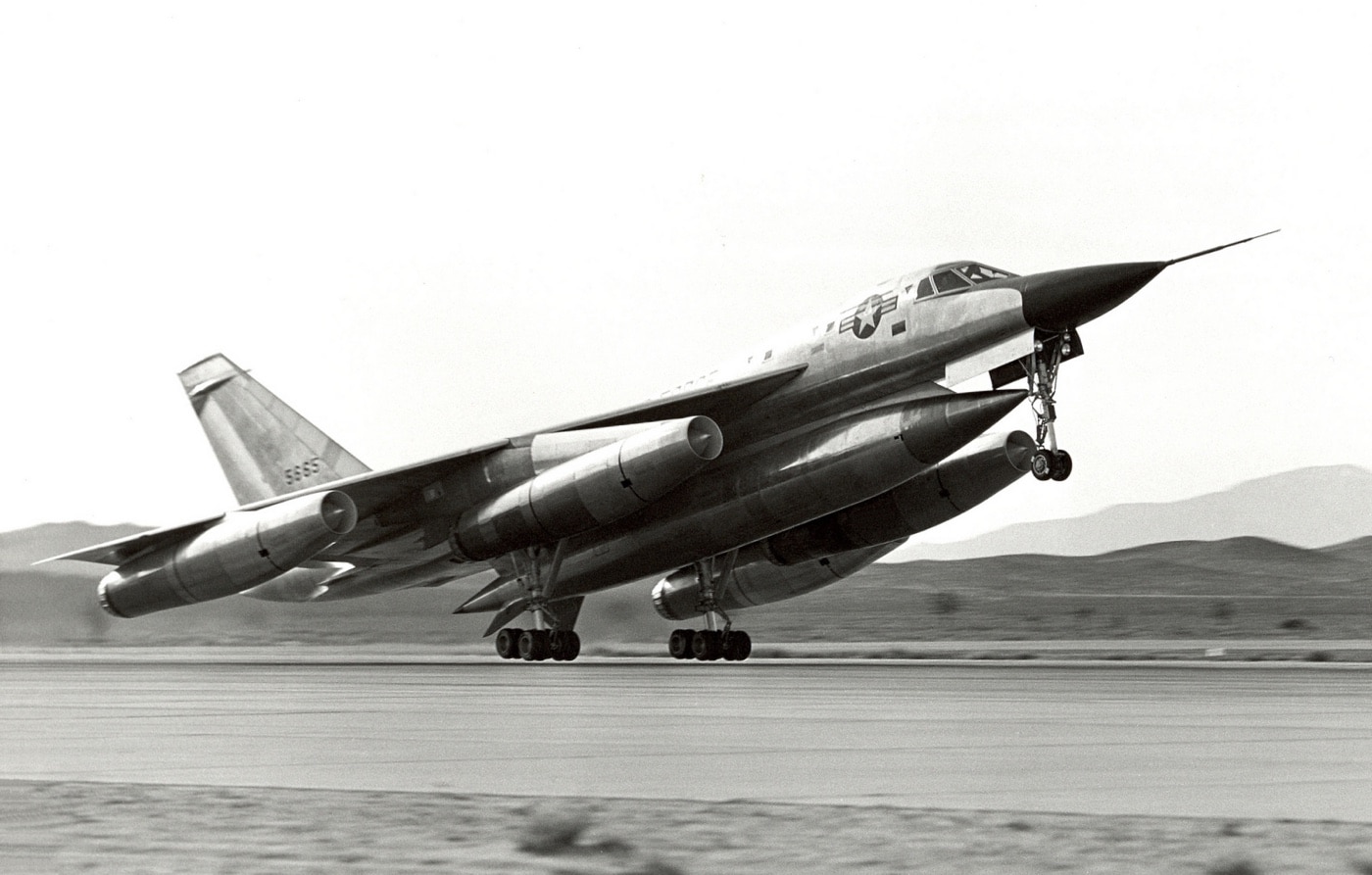
The B-58 was nonetheless still an incredible feat of engineering. First flown in 1956, the Hustler entered squadron service four years later in 1960. This inimitably sleek airplane served as a critical part of America’s nuclear triad for the next decade.
Design Parameters for the Strategic Bomber
The B-58 was designed solely for speed. Maneuverability, crew comfort and even safety ran a distant second to raw rarefied velocity. The plane was legendarily difficult to fly. A total of 24 of the 116 Hustlers produced were lost to crashes — a 21% loss rate. One in five production aircraft ended up in the bottom of some smoking hole, and the plane was never actually used in combat.
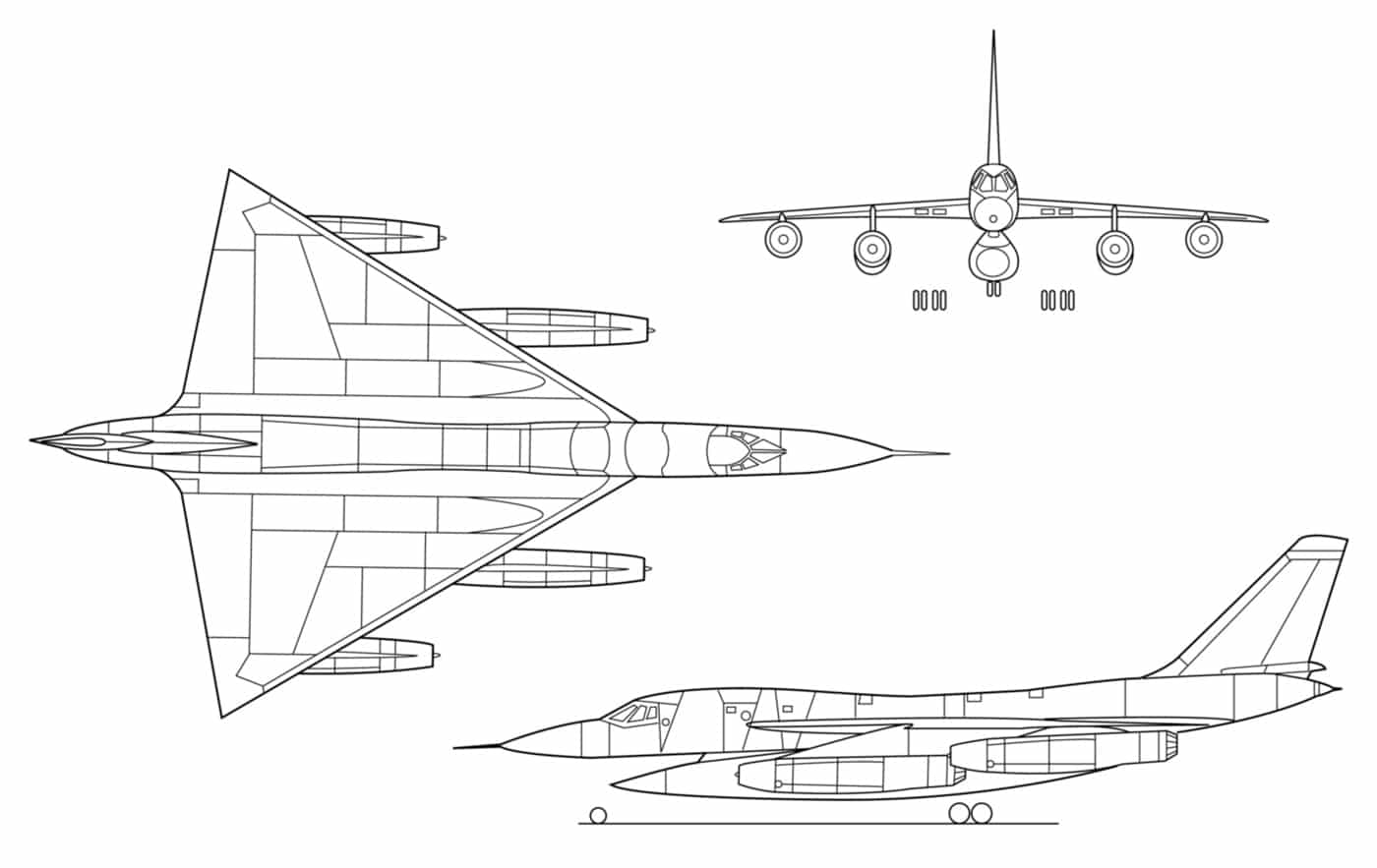
The B-58’s design reflected this hotrod ethos. The wings sported a 60-degree sweep and were intentionally thin so as to minimize drag. The fuselage accommodated three crewmembers, but only just. Because of the plane’s cramped architecture, there was no room for superfluous features. Extra fuel and a single thermonuclear bomb rode in a large external pod mounted along the centerline.
Once it became obvious that surface-to-air missiles were soon to negate the altitude and airspeed advantages implicit in the Hustler’s design, the plane was reconfigured for low-altitude, high-speed strikes. This conversion involved adding a further four external hardpoints for four more atomic bombs. The B-58 was never intended to be used as anything other than a nuclear delivery vehicle.
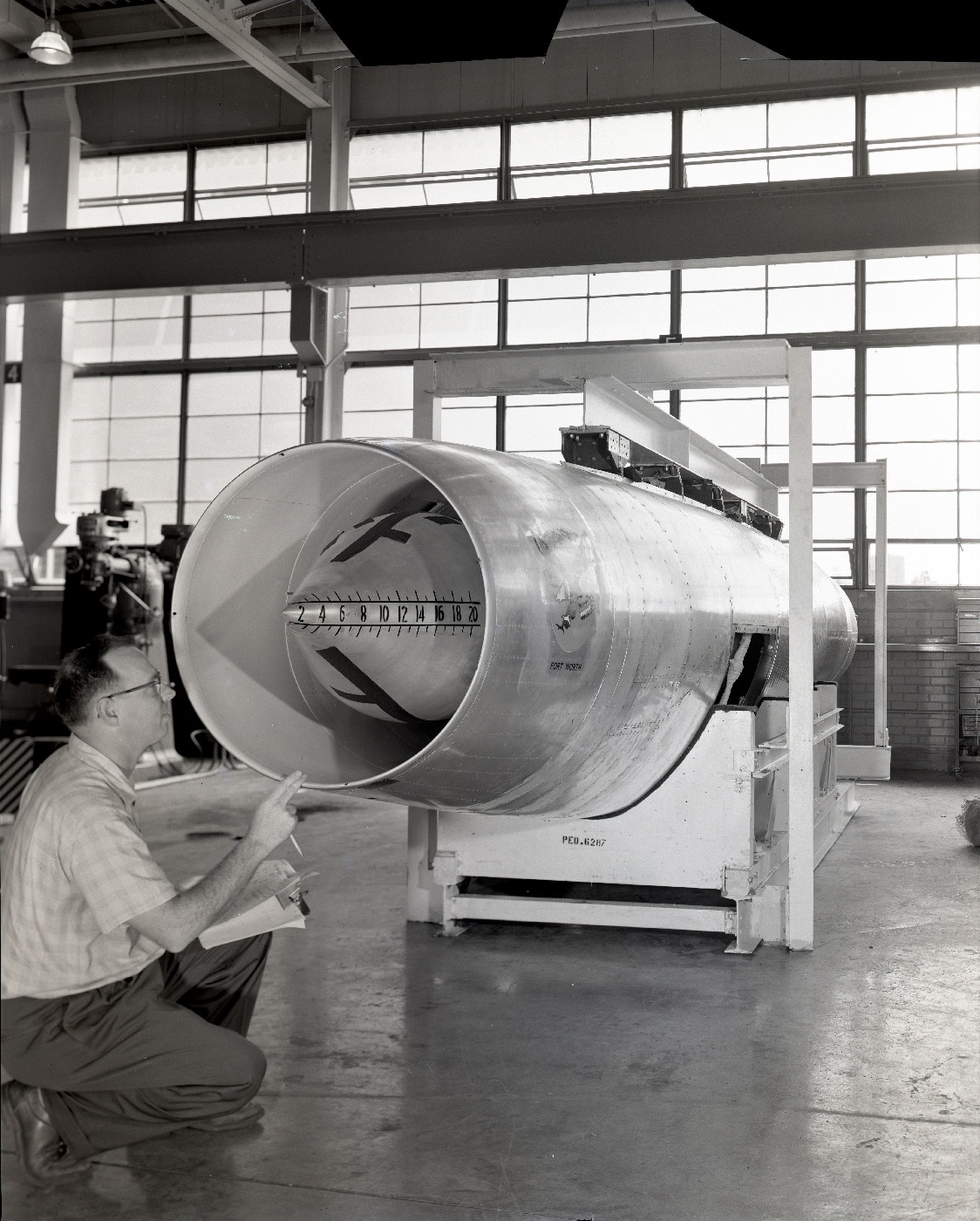
A Wee Bit of Science with Nuclear Weapons
Nuclear weapons come in two broad flavors. Fission-based bombs operate using uranium or plutonium as fuel. The bomb dropped on Hiroshima was a uranium-based weapon. The Nagasaki device utilized plutonium. These two bombs operated by splitting larger atoms into smaller ones. Each weapon produced a practical yield equivalent of between 16 and 20 thousand tons of TNT (trinitrotoluene) conventional high explosive.
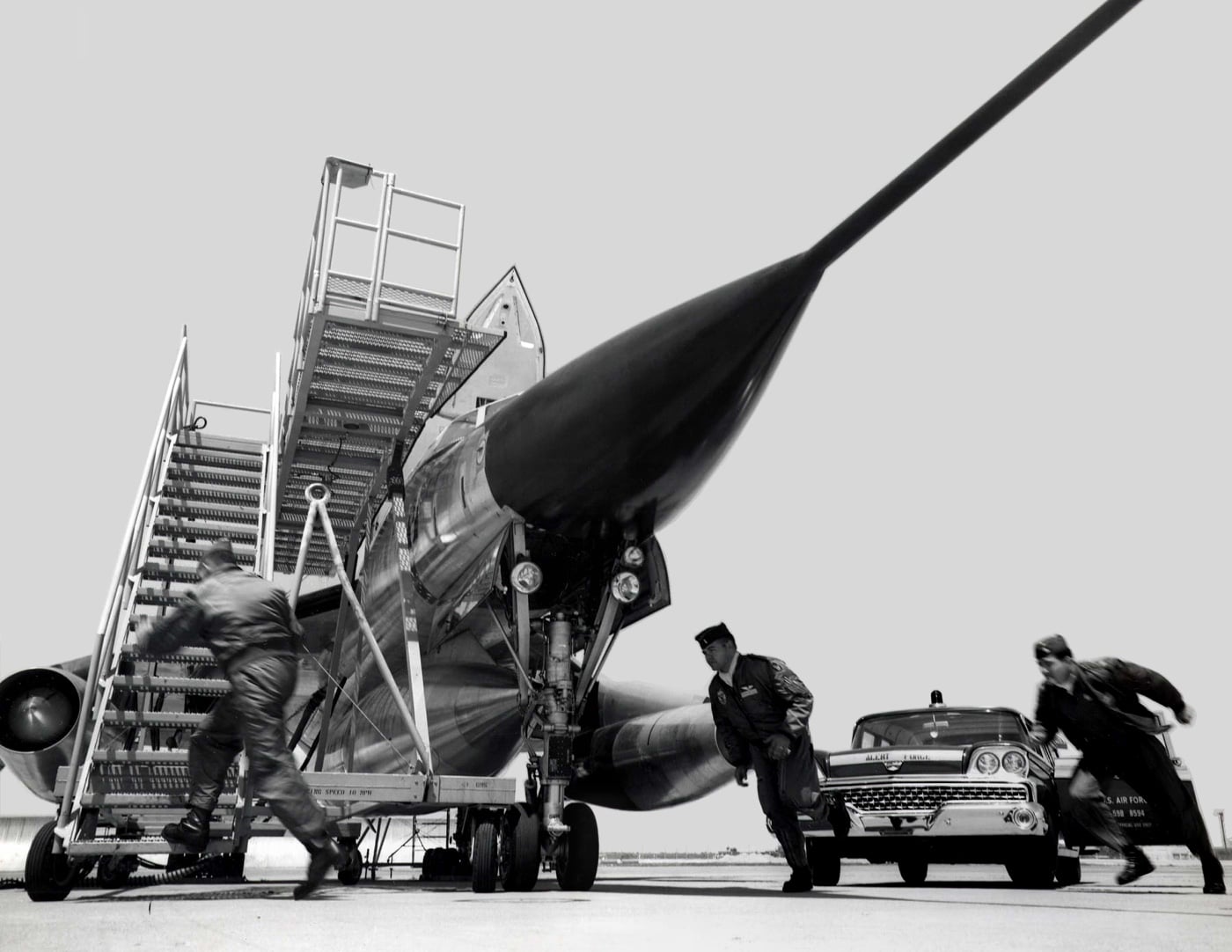
By contrast, the B53 weapon carried by the Hustler was a thermonuclear device. Thermonuclear reactions typically employ a conventional nuclear explosion to create the rarefied temperatures necessary to initiate a fusion reaction wherein hydrogen atoms fuse to create helium. This is the same reaction that powers the sun.
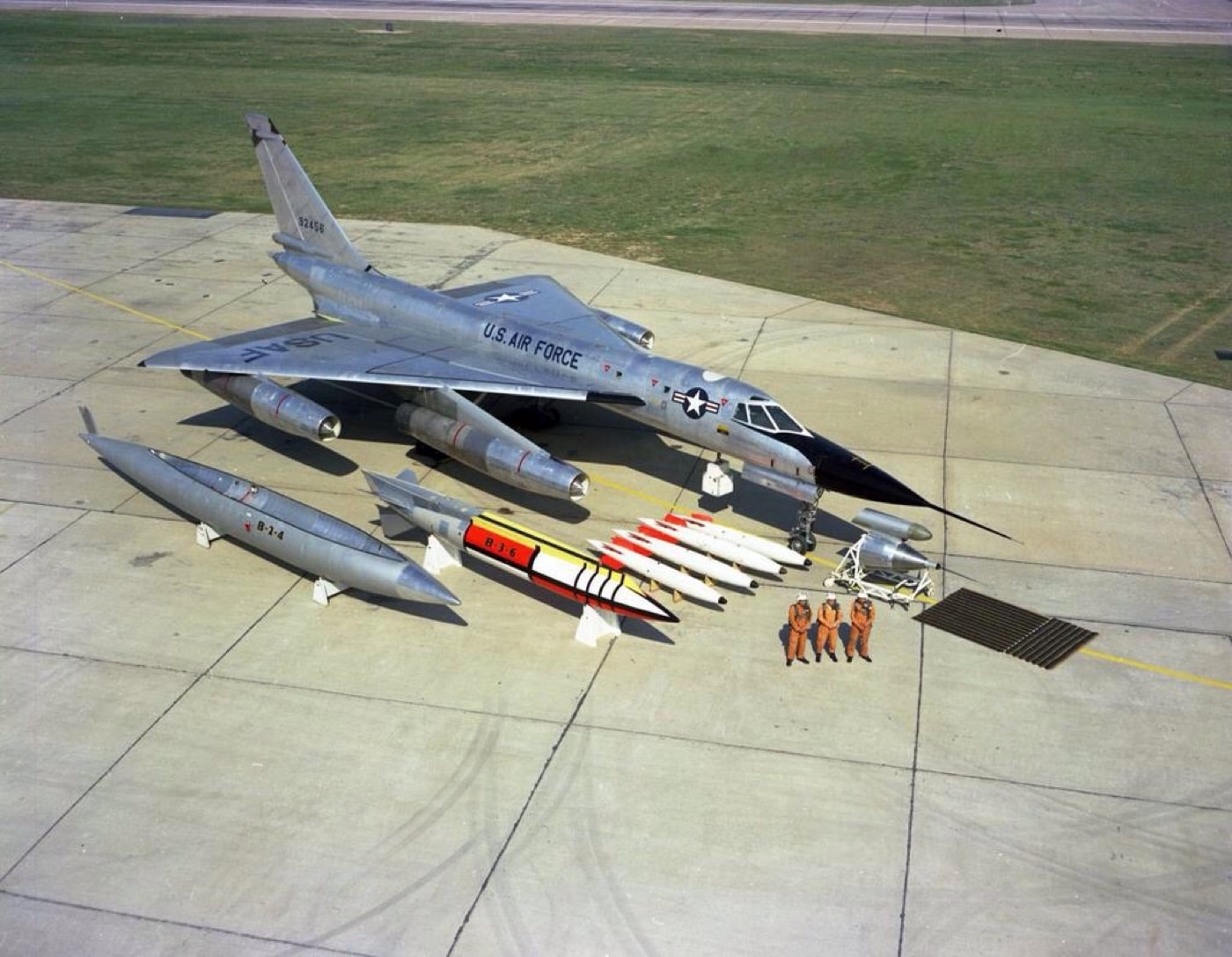
The B53 bomb had a nominal yield of around nine megatons, or nine million tons of TNT. One B53 thermonuclear weapon was the equivalent of detonating some 562 Hiroshima bombs at the same time. Thankfully, these massive planet-wrecking devices have never been used for real.
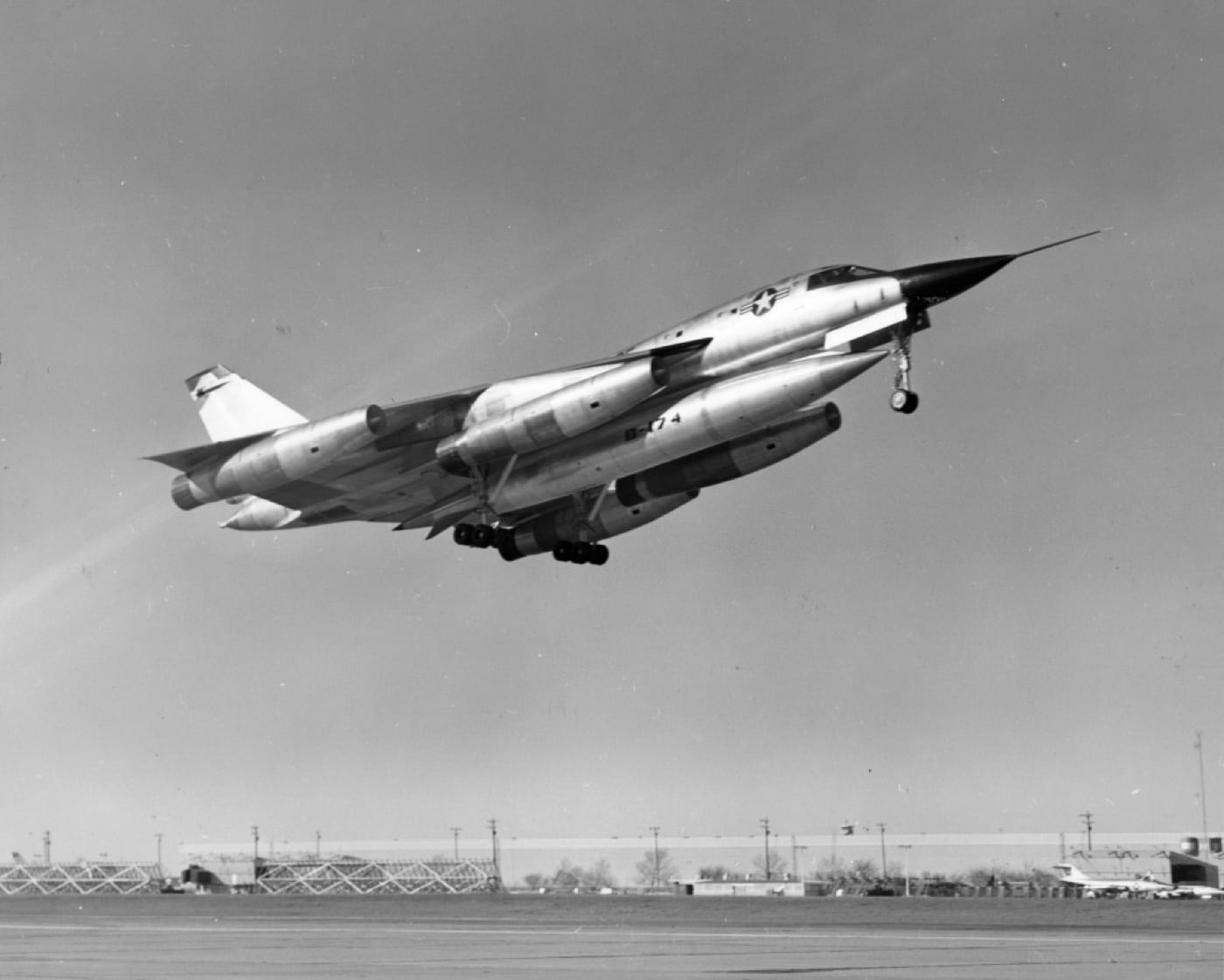
Details of the General Electric J79 Turbojet Engine
The B-58 was an expensive plane to build, and it was an expensive plane to operate. The aircraft was powered by four General Electric J79 afterburning turbojet engines. This was the same powerplant used on the Lockheed F-104 Starfighter and the McDonnell Douglas F-4 Phantom II fighters.
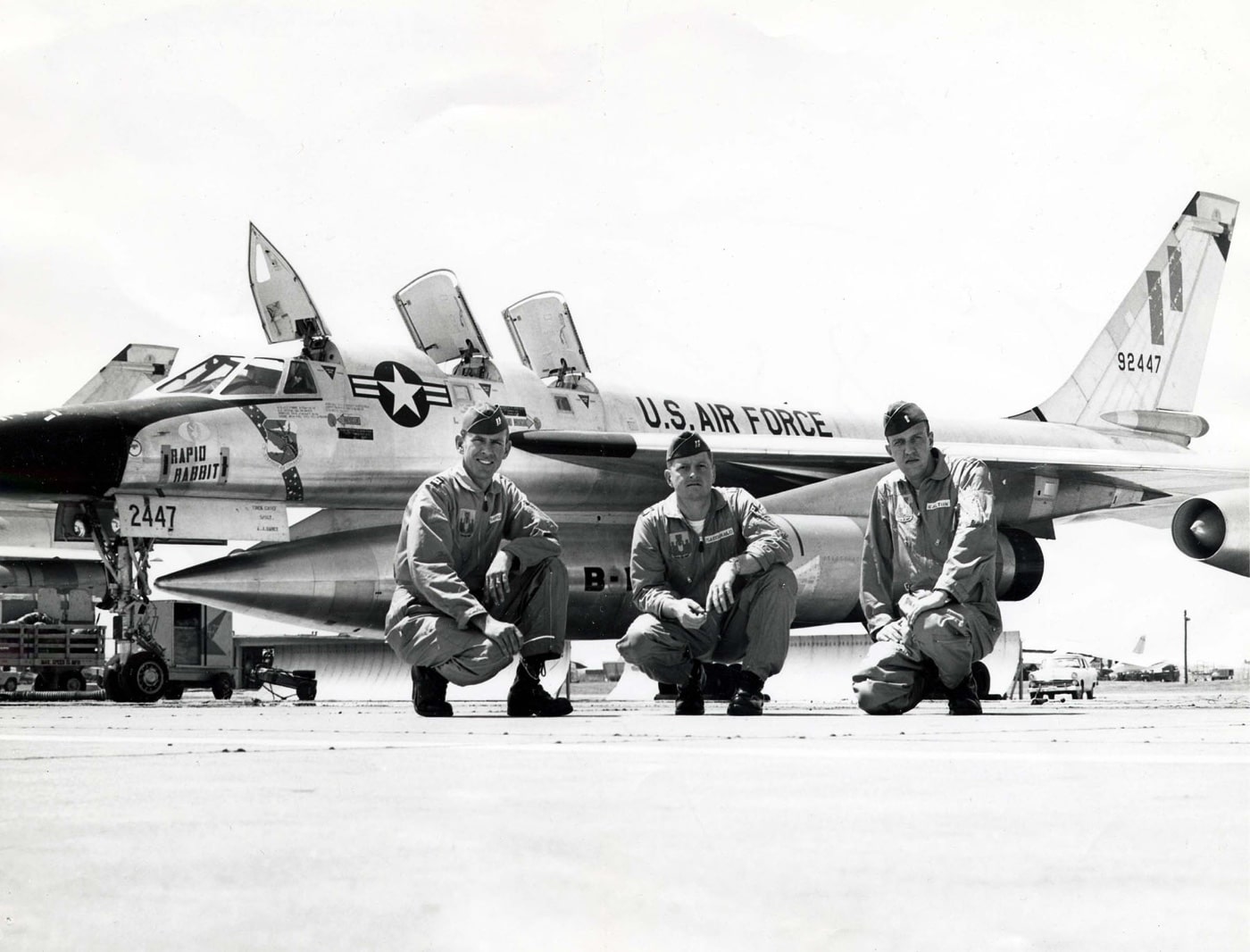
Designated the NB-58A, one of the pre-production YB-58A Hustlers was refitted to test the General Electric J93 engines. The J93 was the same jet engine used in the Mach 3+ North American XB-70 Valkyrie bomber.
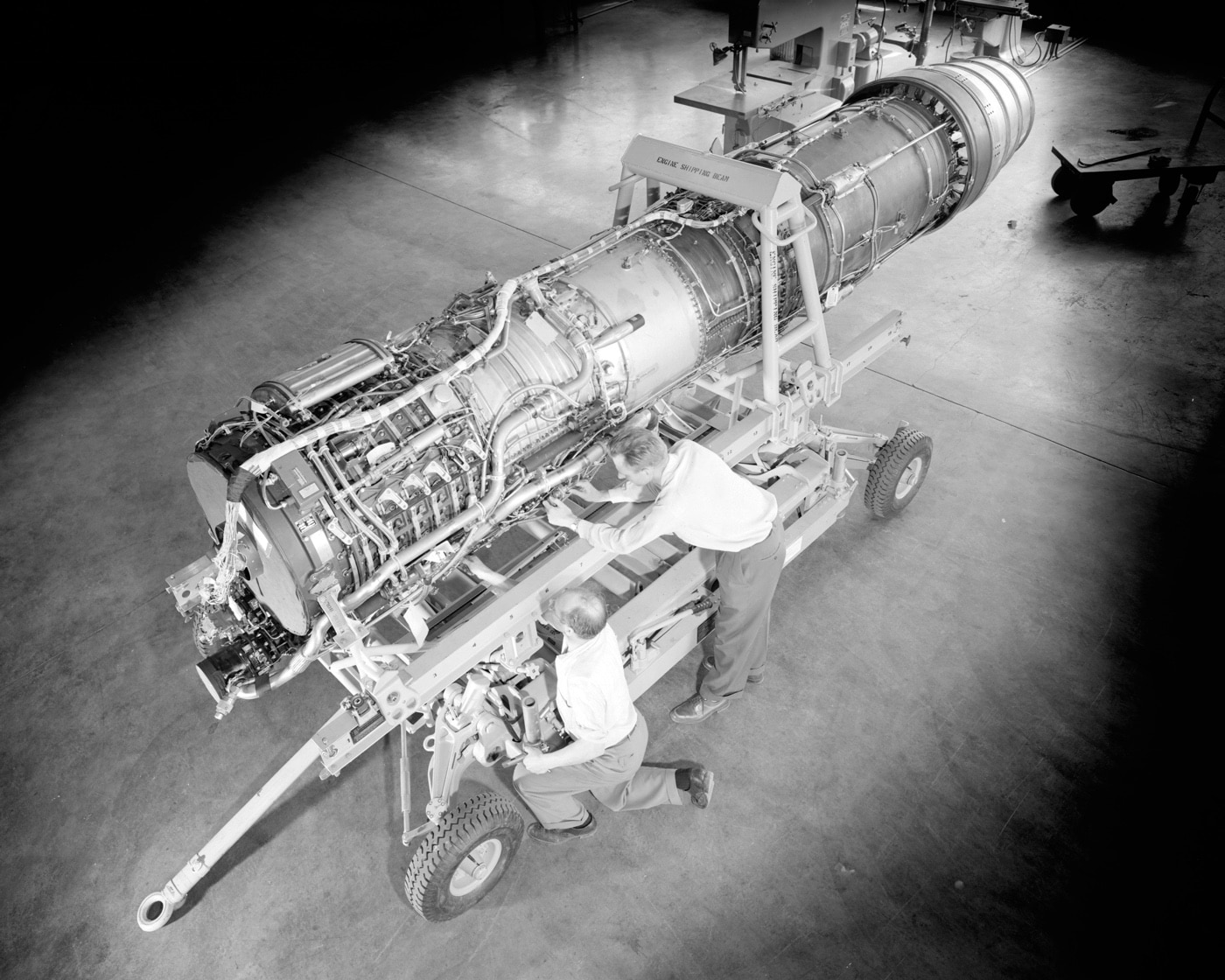
The B-58 cost a third more per flying hour to operate than did the massive eight-engine B-52 Stratofortress.
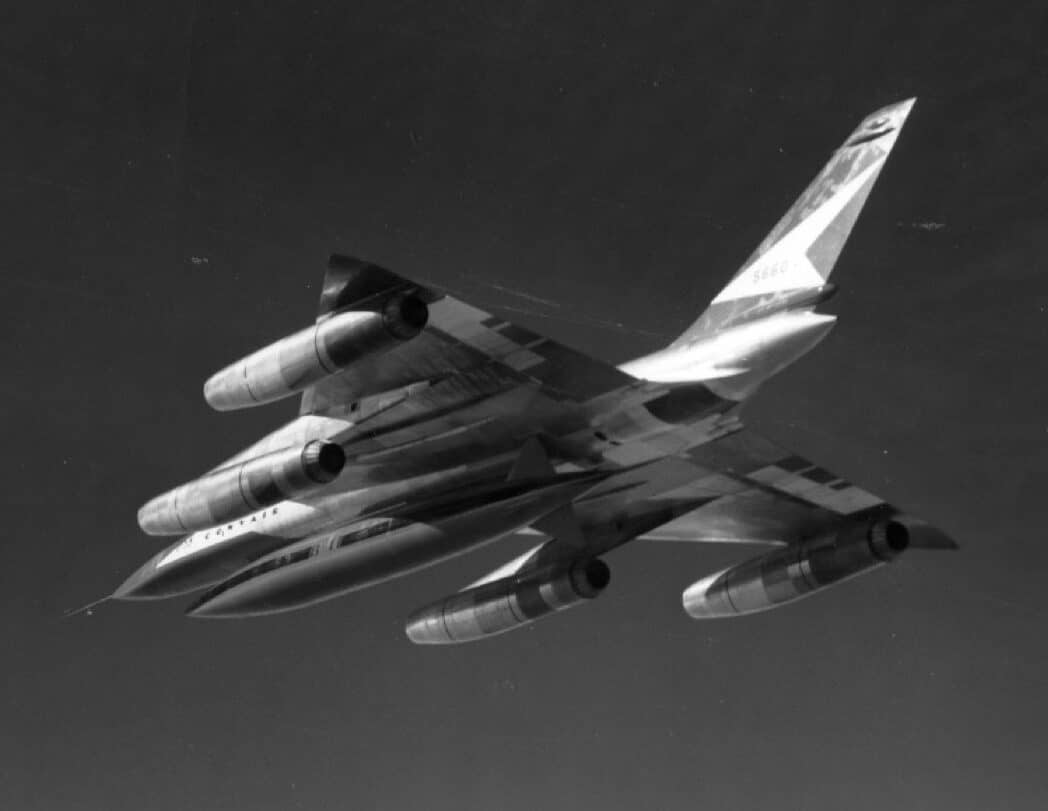
The J79 was a notorious gas hog, and packing four of them onto a single airframe made the B-58 terribly inefficient. Long-range missions required extensive tanker support. However, it was tough to argue with the plane’s performance. The B-58 set 19 different cross-country speed records, some of which remain in place today.
Weird Flight Characteristics of a Supersonic Delta-Wing Design
The sleek delta-wing design of the Hustler created some unenviable flight characteristics. The plane demanded an excessively high angle of attack to maintain control, particularly at low speeds. At Mach 0.5 the pilot had to hold the nose at 9.4 degrees above the horizon to maintain level flight. If that angle surpassed 17 degrees, the plane would pitch up and spin. At any altitude below 15,000 feet, a spin was considered unrecoverable.
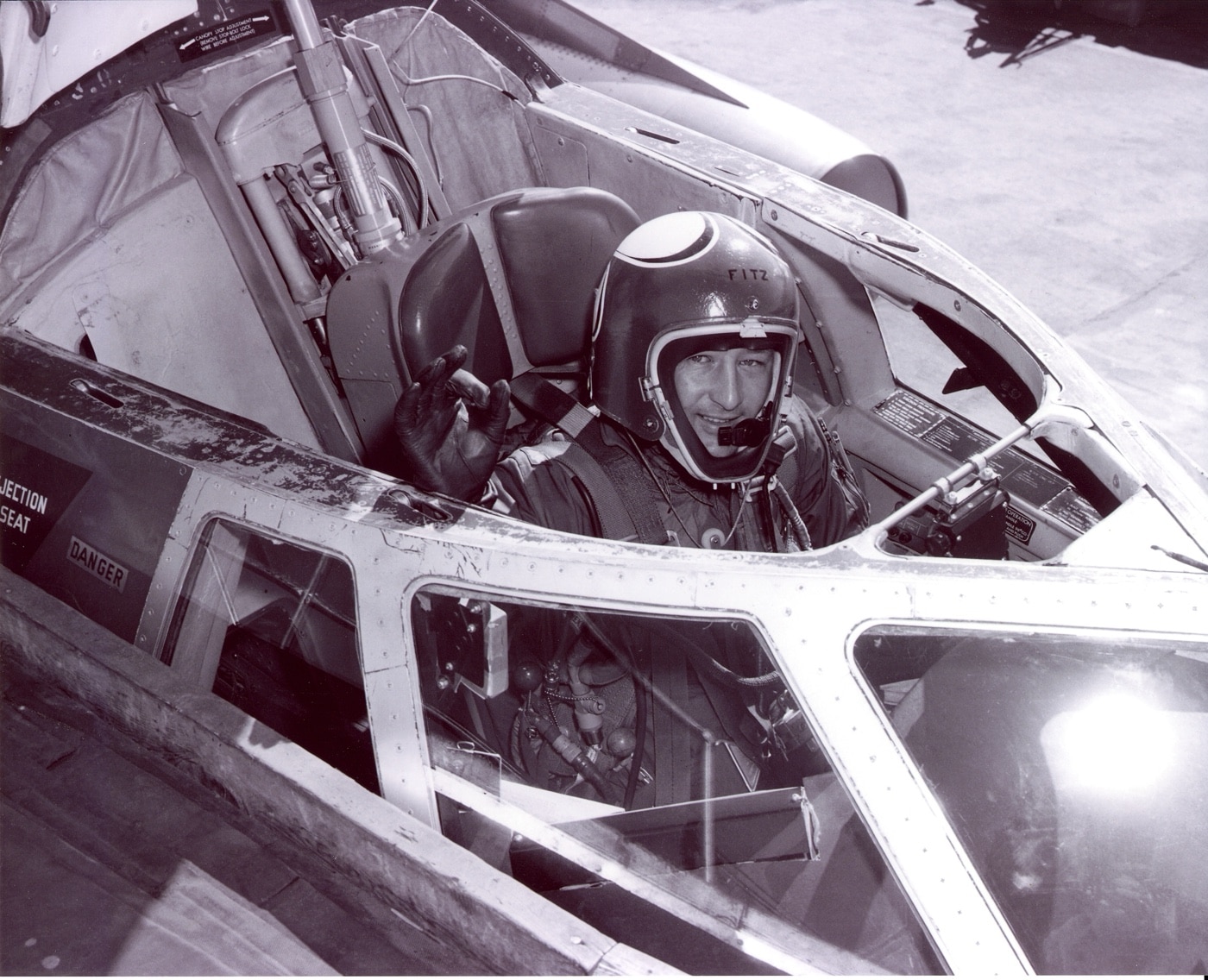
An unrelated problem was called fuel stacking. During periods of sharp acceleration or deceleration, fuel would slosh in the tanks and alter the plane’s center of gravity. In such a high-performance aircraft for which CG issues were critical, this also adversely affected control of the machine.
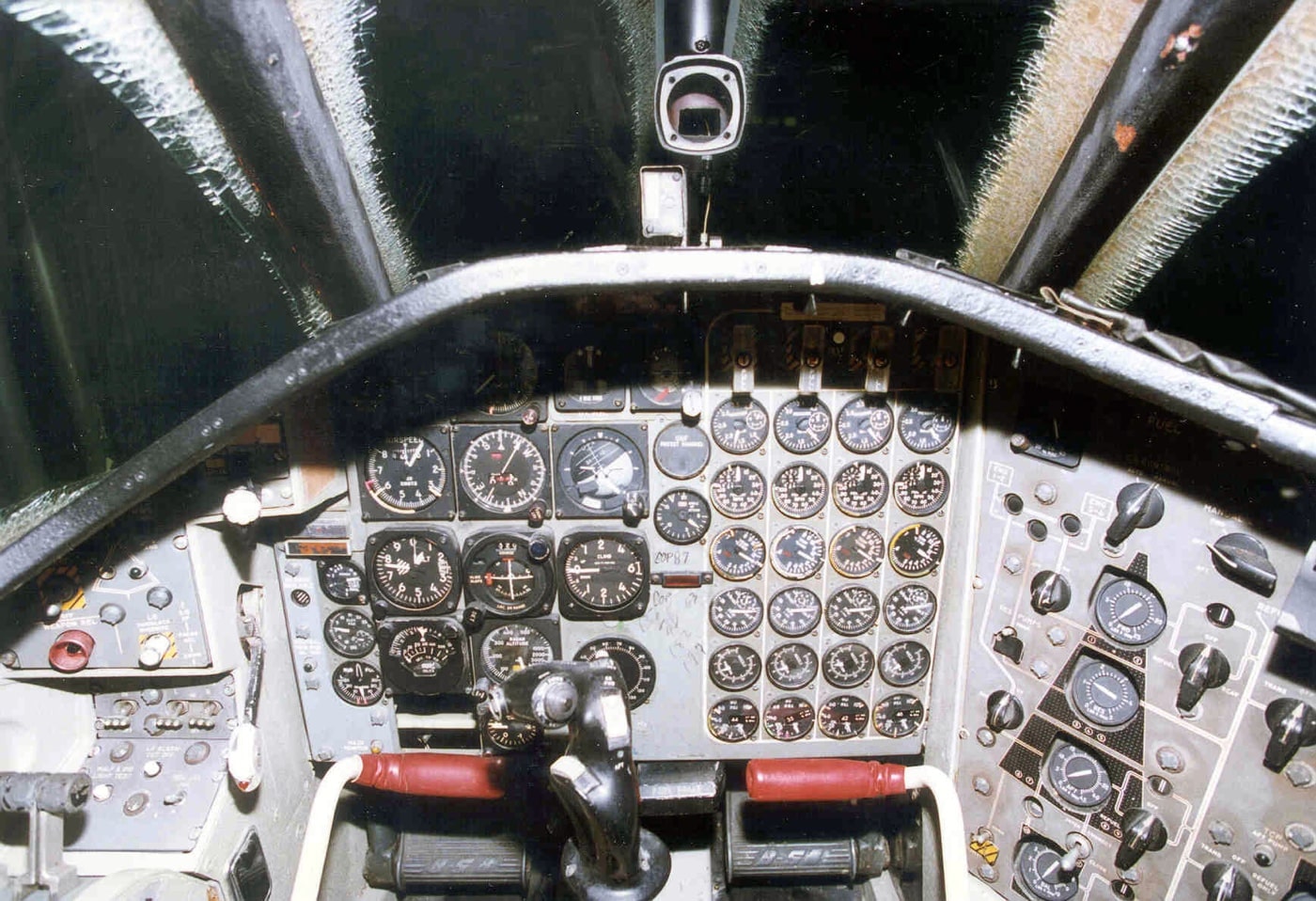
For its era, the B-58 reflected the state of the art. That included taped cockpit voice warnings. The Northrop Corporation hired actress and singer Joan Elms to record the plane’s audio warnings. B-58 crews came to refer to the plane’s sultry voice as “Sexy Sally.”
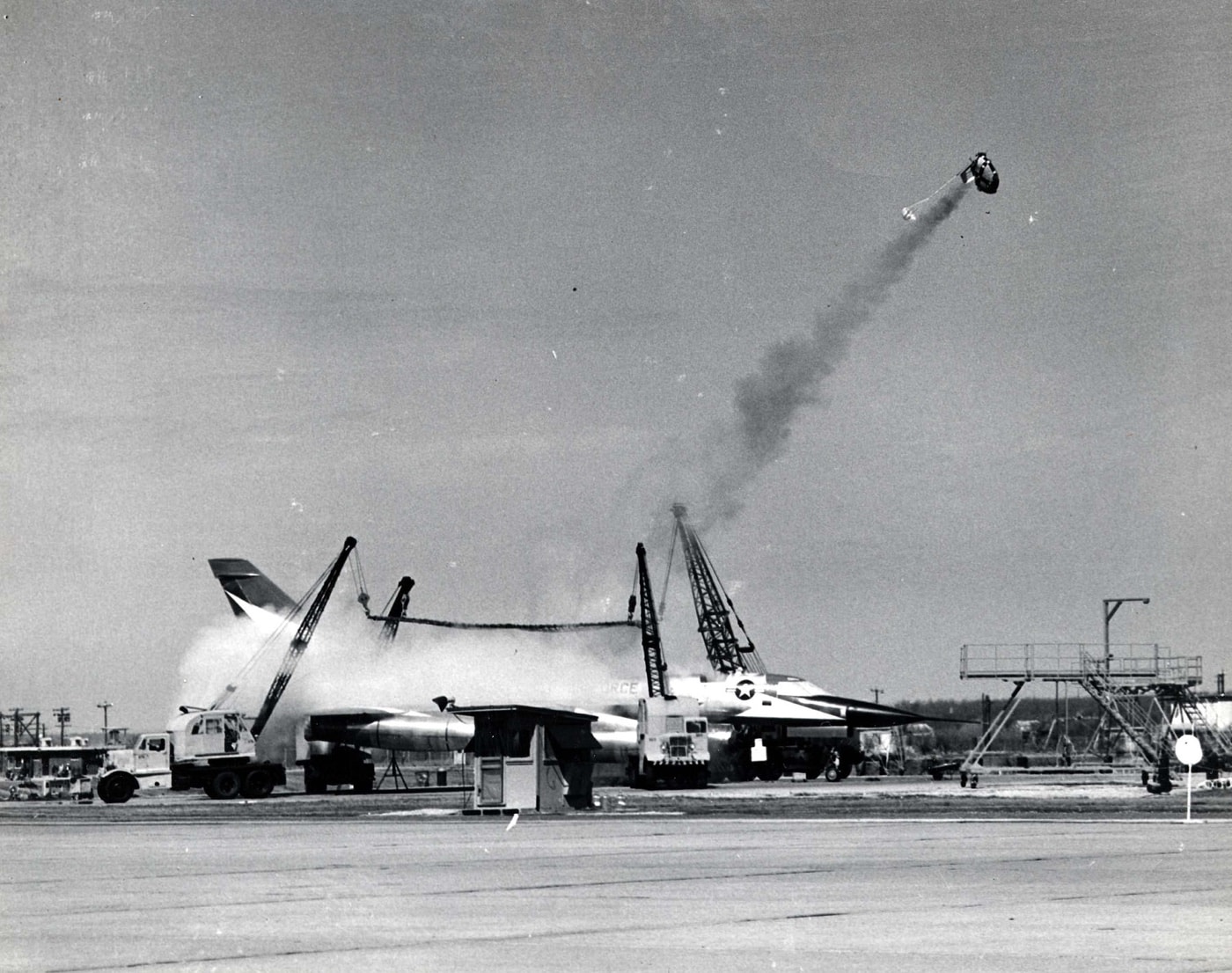
Convair engineers tried desperately to design an ejection system wherein an aircrewman could survive separation from the airplane at twice the speed of sound. Their solution was a clamshell capsule that snapped shut around the airman prior to ejection. This capsule could then be used as a canoe of sorts in the event of a water landing.
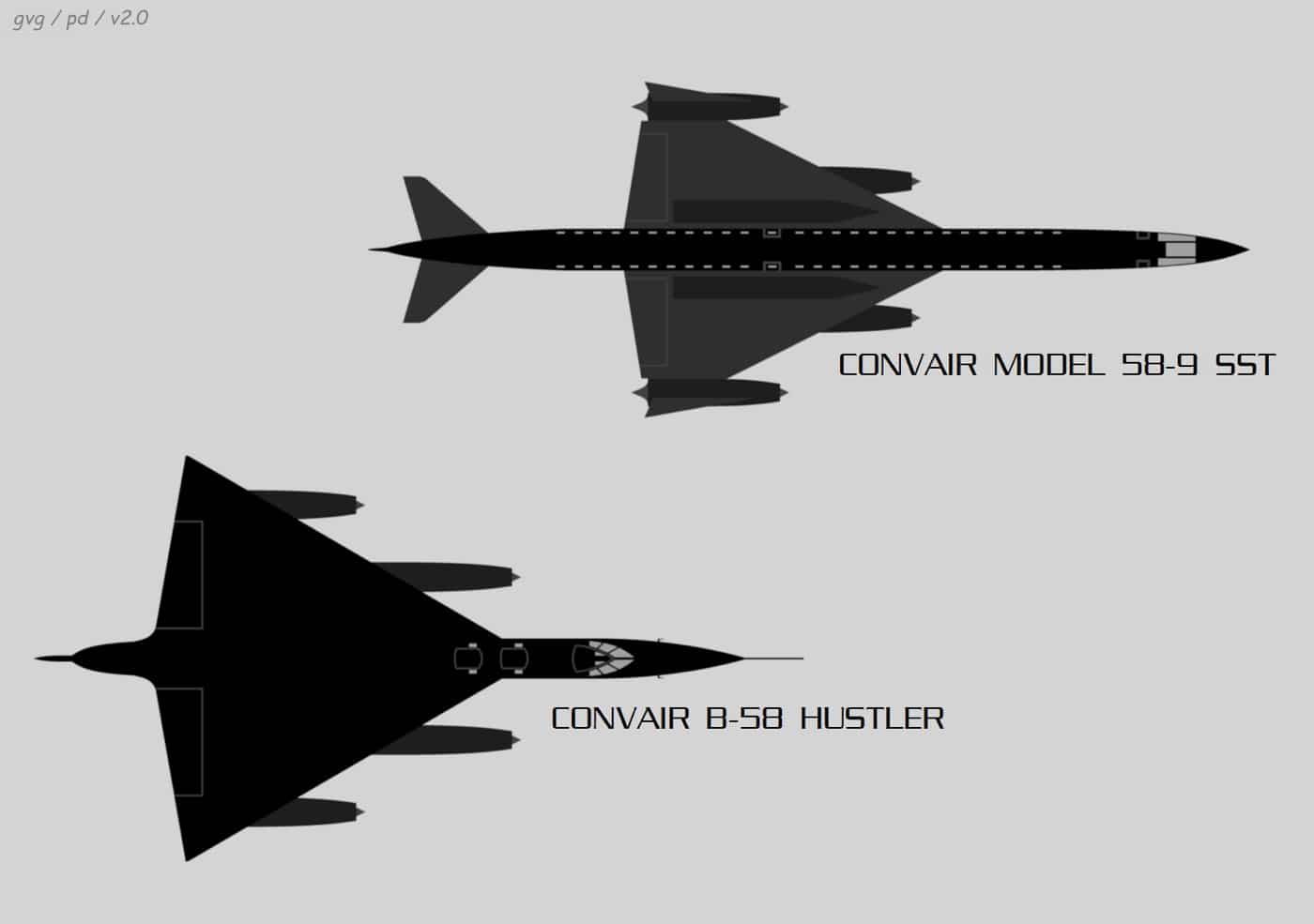
These capsules were actually tested with live chimpanzees and, believe it or not, bears, prior to fielding. In fact, in 1963, a bear became the first living creature to survive a supersonic ejection. It was obviously a different time. I somehow doubt PETA would respond favorably to such stuff today.
Final Considerations on the Strategic Air Command Bomber
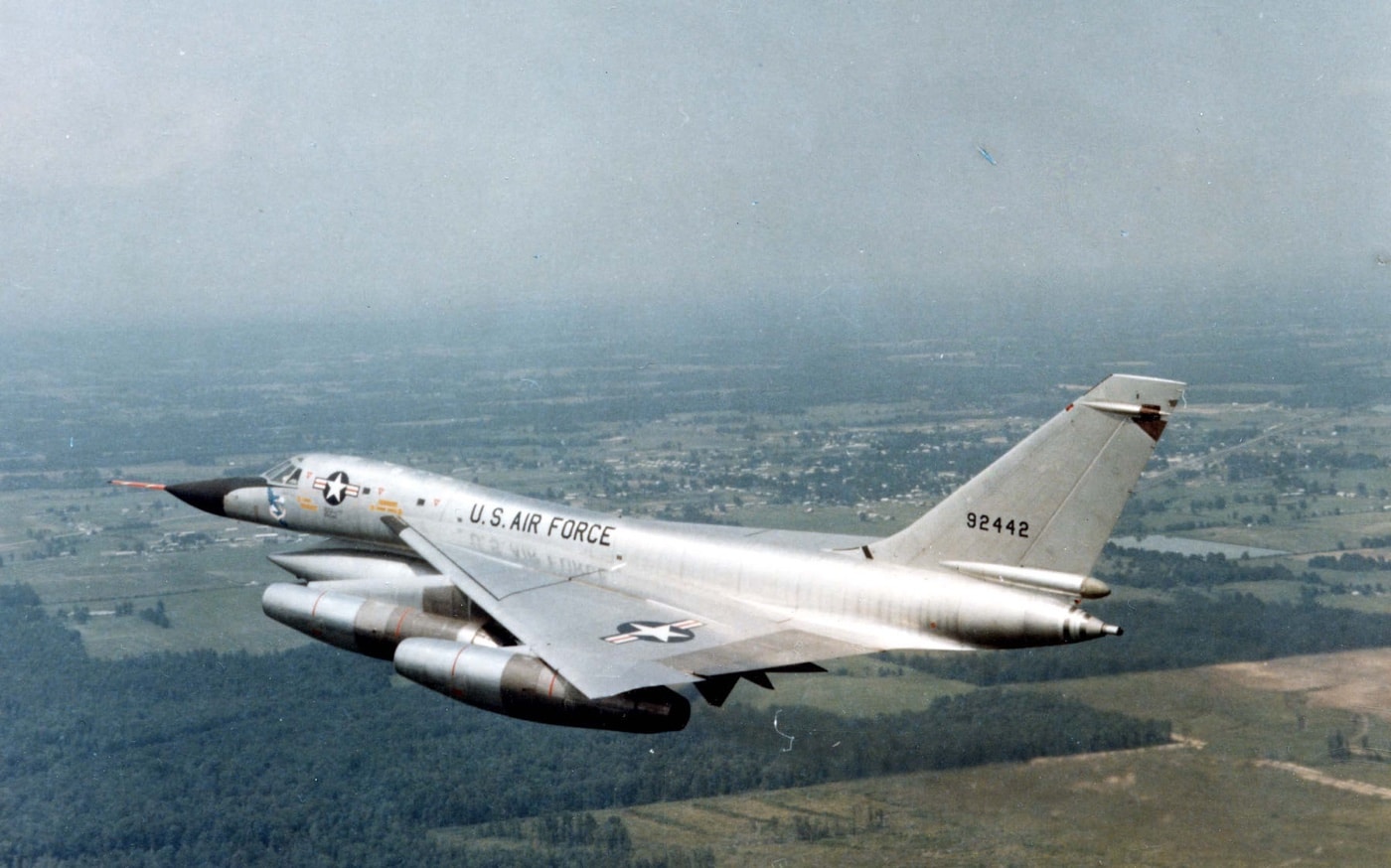
The Convair B-58 Hustler was a doomsday weapon, pure and simple. In the absence of global thermonuclear war, this highly-advanced plane was essentially worthless. However, the Hustler was a gleaming example of advanced Space Age Cold War tech. Fast, sleek, deadly, and terribly unforgiving of inattention, the B-58 was indeed an amazing machine.
Editor’s Note: Please be sure to check out The Armory Life Forum, where you can comment about our daily articles, as well as just talk guns and gear. Click the “Go To Forum Thread” link below to jump in and discuss this article and much more!
Read the full article here






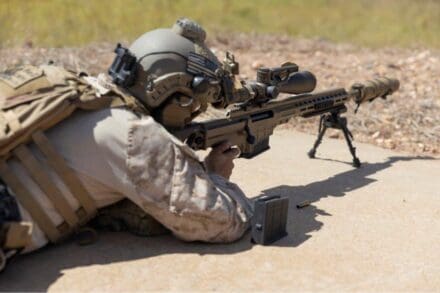

Leave a Reply